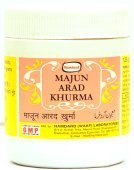Pista, Pishta, Piṣṭa: 20 definitions
Introduction:
Pista means something in Hinduism, Sanskrit, Buddhism, Pali, Marathi, Hindi, biology. If you want to know the exact meaning, history, etymology or English translation of this term then check out the descriptions on this page. Add your comment or reference to a book if you want to contribute to this summary article.
The Sanskrit term Piṣṭa can be transliterated into English as Pista or Pishta, using the IAST transliteration scheme (?).
Alternative spellings of this word include Pisht.
In Hinduism
Purana and Itihasa (epic history)
Source: archive.org: Shiva Purana - English TranslationPiṣṭa (पिष्ट) or Piṣṭamaya refers to “beaten flour”, representing the material of the liṅga of the Yakṣas, according to the Śivapurāṇa 2.1.12, where the Devas and Viṣṇu requested Viśvakarman for liṅgas for the achievement of the desires of all people:—“[...] at our bidding Viśvakarmā made liṅgas and gave them to the devas according to their status. [...] the Goddesses (Devī) took the liṅgas of butter; the Yogins took liṅgas of the ash; the Yakṣas took liṅgas of curd and the deity Chāyā took a liṅga of beaten flour (Piṣṭa-liṅga). [...] Thus different kinds of liṅgas were given to them by Viśvakarmā which the devas and the celestial sages worship regularly. After giving the devas the various liṅgas from a desire for their benefit, Viṣṇu explained the mode of worship of Śiva to me, Brahmā”.

The Purana (पुराण, purāṇas) refers to Sanskrit literature preserving ancient India’s vast cultural history, including historical legends, religious ceremonies, various arts and sciences. The eighteen mahapuranas total over 400,000 shlokas (metrical couplets) and date to at least several centuries BCE.
Dharmashastra (religious law)
Source: Sacred Texts: The Grihya Sutras, Part 2 (SBE30)Piṣṭa (पिष्ट) refers to “ground flour”.—The taṇḍulas are the unhusked grains, piṣṭa is the ground flour. In Sanskrit a distinction is made between śasya, the corn in the field, dhānya, corn with the husk, taṇḍula, grains without husks, anna, roasted grains.

Dharmashastra (धर्मशास्त्र, dharmaśāstra) contains the instructions (shastra) regarding religious conduct of livelihood (dharma), ceremonies, jurisprudence (study of law) and more. It is categorized as smriti, an important and authoritative selection of books dealing with the Hindu lifestyle.
Ayurveda (science of life)
Dietetics and Culinary Art (such as household cooking)
Source: Shodhganga: Dietetics and culinary art in ancient and medieval IndiaPiṣṭa (पिष्ट) refers to “grained flour” and is mentioned in a list of potential causes for indigestion in the 17th century Bhojanakutūhala (dravyaguṇāguṇa-kathana), and is commonly found in literature dealing with the topics of dietetics and culinary art, also known as Pākaśāstra or Pākakalā.—A complete section in Bhojanakutūhala is devoted for the description of agents that cause indigestion [viz., piṣṭa (grained flour)]. These agents consumed on a large scale can cause indigestion for certain people. The remedies [viz., kāñjika mixed with salt (fermented gruel)] for these types of indigestions are also explained therewith.
Unclassified Ayurveda definitions
Source: archive.org: Vagbhata’s Ashtanga Hridaya Samhita (first 5 chapters)Piṣṭa (पिष्ट) refers to “products made of rice-flour”, which is mentioned in verse 3.12 of the Aṣṭāṅgahṛdayasaṃhitā (Sūtrasthāna) by Vāgbhaṭa.—Accordingly, “[...] Having thereupon bathed according to ritual—with the oil removed by an astringent—,rubbed (one’s body) with musk-charged saffron, (and) fumigated (oneself) with aloe-wood one shall (at last) turn to rich, broths, fat meat, rum, barm, arrack, delicious products made of wheat, (rice-)flour [viz., piṣṭa], urd-beans, sugarcane, and milk, [...]”.
Note: Piṣṭa (“flour”) has been translated by ’bras-khur (“rice-flour”); cf. Indu’s gloss śālipiṣṭa at Aṣṭāṅgasaṃgraha I.4~I p. 25 b 9.

Āyurveda (आयुर्वेद, ayurveda) is a branch of Indian science dealing with medicine, herbalism, taxology, anatomy, surgery, alchemy and related topics. Traditional practice of Āyurveda in ancient India dates back to at least the first millenium BC. Literature is commonly written in Sanskrit using various poetic metres.
Shaivism (Shaiva philosophy)
Source: Brill: Śaivism and the Tantric TraditionsPiṣṭa (पिष्ट) or Saṃpiṣṭa refers to “grinding” (i.e., ‘grinding together ingredients’), according to the Guhyasūtra chapter 3.—Accordingly, “[...] [Using the mantra] ‘oṃ namo vāyupathacāriṇe amitagatiparākramāya vimale kulu kulu svāhā’, [and taking] arsenic, gold [and?] a mineral, …, ground up with pig fat/marrow (varāha-vaśa-saṃpiṣṭa), over which one has recited [the navātman] 1000 times, he should smear [the mixture] on his feet/legs, while once again reciting the navātman: he will travel 200 yojanās unwearied!”.

Shaiva (शैव, śaiva) or Shaivism (śaivism) represents a tradition of Hinduism worshiping Shiva as the supreme being. Closely related to Shaktism, Shaiva literature includes a range of scriptures, including Tantras, while the root of this tradition may be traced back to the ancient Vedas.
Kavya (poetry)
Source: Brill: Śaivism and the Tantric Traditions (kavya)Piṣṭa (पिष्ट) refers to “powdered (flour-cakes)”, according to Bāṇa’s Kādambarī (p. 225).—Accordingly, while describing the shire of the Goddess Caṇḍikā, “[Then the portal to the sanctum sanctorum, a riot of colour and form:] She was being illuminated by the entrance, on which there were hanging cloths reddened by lamp-smoke, a row of bracelets made of peacock-throats festooned [over it], a garland of bells closely-set and pale with powdered flour-cakes (piṣṭa-piṇḍa-pāṇḍurita), which supported two door-panels, [studded] with tin lion heads with thick, iron pins in their centres, barricaded with an ivory-rod bolt, carrying [what seemed to be] a necklace of sparkling bubbles that were mirrors oozing yellow, blue and red [light]”.

Kavya (काव्य, kavya) refers to Sanskrit poetry, a popular ancient Indian tradition of literature. There have been many Sanskrit poets over the ages, hailing from ancient India and beyond. This topic includes mahakavya, or ‘epic poetry’ and natya, or ‘dramatic poetry’.
Biology (plants and animals)
Source: Wisdom Library: Local Names of Plants and DrugsPista [पिस्ता] in the Hindi language is the name of a plant identified with Pistacia vera L. from the Anacardiaceae (Cashew) family having the following synonyms: Pistacia trifolia, Pistacia macrophylla, Pistacia officinarum. For the possible medicinal usage of pista, you can check this page for potential sources and references, although be aware that any some or none of the side-effects may not be mentioned here, wether they be harmful or beneficial to health.
Pista in the Urdu language, ibid. previous identification.

This sections includes definitions from the five kingdoms of living things: Animals, Plants, Fungi, Protists and Monera. It will include both the official binomial nomenclature (scientific names usually in Latin) as well as regional spellings and variants.
Languages of India and abroad
Pali-English dictionary
Source: Sutta: The Pali Text Society's Pali-English DictionaryPista, (pp. of pisati) crushed, ground Vism. 260 (=piṭṭha KhA id. p.); VbhA. 243. Pisīyati Pass. of pisati (q. v.). (Page 461)

Pali is the language of the Tipiṭaka, which is the sacred canon of Theravāda Buddhism and contains much of the Buddha’s speech. Closeley related to Sanskrit, both languages are used interchangeably between religions.
Marathi-English dictionary
Source: DDSA: The Molesworth Marathi and English Dictionarypistā (पिस्ता).—m ( P) The pistachio nut,--the nut or the plant.
Source: DDSA: The Aryabhusan school dictionary, Marathi-Englishpistā (पिस्ता).—m The pistachio nut,-the nut or the plant.
Marathi is an Indo-European language having over 70 million native speakers people in (predominantly) Maharashtra India. Marathi, like many other Indo-Aryan languages, evolved from early forms of Prakrit, which itself is a subset of Sanskrit, one of the most ancient languages of the world.
Sanskrit dictionary
Source: DDSA: The practical Sanskrit-English dictionaryPiṣṭa (पिष्ट).—p. p. [piṣa-kta]
1) Ground, powdered, crushed; यत् पिषतामपि नॄणां पिष्टोऽपि तनोषि परिमलैः पुष्टिम् (yat piṣatāmapi nṝṇāṃ piṣṭo'pi tanoṣi parimalaiḥ puṣṭim) Bv.1.12.
2) Rubbed together, squeezed or clasped (as the hands).
3) Kneaded.
-ṣṭam 1 Anything ground, a ground substance.
2) Flour, meal; पिष्टं पिनष्टि (piṣṭaṃ pinaṣṭi) he 'grinds flour'; i. e. does a useless work or a profitless repetition.
3) Lead.
Source: Cologne Digital Sanskrit Dictionaries: Shabda-Sagara Sanskrit-English DictionaryPiṣṭa (पिष्ट).—mfn.
(-ṣṭaḥ-ṣṭā-ṣṭaṃ) 1. Ground, pounded, bruised. 2. Clasped, (as the hands,) squeezed, rubbed together. 3. Kneaded. n.
(-ṣṭaṃ) 1. Lead. 2. The flour or meal of any thing that is ground. E. piṣ to pound or bruise, aff. kta.
Source: Cologne Digital Sanskrit Dictionaries: Cappeller Sanskrit-English DictionaryPiṣṭa (पिष्ट).—1. [adjective] adorned, decorated.
--- OR ---
Piṣṭa (पिष्ट).—2. [substantive] bread, cake; [feminine] ī & [neuter] flour, meal.
Source: Cologne Digital Sanskrit Dictionaries: Monier-Williams Sanskrit-English Dictionary1) Piṣṭa (पिष्ट):—[from piś] 1. piṣṭa mfn. (for 2. See √piṣ) fashioned, prepared, decorated (superl. -tama), [Ṛg-veda; Atharva-veda; Vājasaneyi-saṃhitā]
2) [v.s. ...] n. = rūpa, [Naighaṇṭuka, commented on by Yāska iii, 7.]
3) [from piṣ] 2. piṣṭa mfn. (for 1. See above) crushed, ground etc., [Ṛg-veda] etc. etc.
4) [v.s. ...] clasped, squeezed, rubbed together (as the hands), [Horace H. Wilson]
5) [v.s. ...] kneaded, [ib.]
6) [v.s. ...] m. a cake, pastry, [cf. Lexicographers, esp. such as amarasiṃha, halāyudha, hemacandra, etc.]
7) [v.s. ...] Name of a man [gana] śivādi
8) [v.s. ...] [plural] his descendants [gana] upakādi
9) [from piṣ] n. flour, meal, anything ground (na pinaṣṭi piṣṭam, ‘he does not grind flour’ id est. he does no useless work), [Bhāgavata-purāṇa]
10) [v.s. ...] lead, [cf. Lexicographers, esp. such as amarasiṃha, halāyudha, hemacandra, etc.]
Source: Cologne Digital Sanskrit Dictionaries: Yates Sanskrit-English DictionaryPiṣṭa (पिष्ट):—[(ṣṭaḥ-ṣṭā-ṣṭaṃ) p.] Ground; kneaded; clasped. n. Lead; flour or meal.
Source: DDSA: Paia-sadda-mahannavo; a comprehensive Prakrit Hindi dictionary (S)Piṣṭa (पिष्ट) in the Sanskrit language is related to the Prakrit words: Caḍḍia, Ṇiriṇāsia, Ṇiriṇijjia, Ṇivahia, Piṭṭha.
[Sanskrit to German]
Sanskrit, also spelled संस्कृतम् (saṃskṛtam), is an ancient language of India commonly seen as the grandmother of the Indo-European language family (even English!). Closely allied with Prakrit and Pali, Sanskrit is more exhaustive in both grammar and terms and has the most extensive collection of literature in the world, greatly surpassing its sister-languages Greek and Latin.
Hindi dictionary
Source: DDSA: A practical Hindi-English dictionary1) Piṣṭa (पिष्ट) [Also spelled pisht]:—(a) powdered, ground; ~[peṣaṇa] hackneyed repetition.
2) Pistā (पिस्ता):—(nm) pistachio-nut.
...
Kannada-English dictionary
Source: Alar: Kannada-English corpusPiṣṭa (ಪಿಷ್ಟ):—
1) [noun] any solid substance reduced to a state of fine, loose particles by crushing, grinding, disintegration, etc.; powder.
2) [noun] a food made of the flour of rice, ragi etc.
3) [noun] 'a heavy, soft, malleable, bluish-gray metallic chemical element used in batteries and in numerous alloys and compounds: lead (symbol- Pb.).'4) [noun] any of certain organic compounds, including the sugars, starches, and celluloses, which form an important class of foods in animal nutrition, supplying energy to the body; carbohydrate.
--- OR ---
Pistā (ಪಿಸ್ತಾ):—
1) [noun] the small tree Pistacia vera of Anacardiaceae family; Pistachio.
2) [noun] its edible, greenish seed; pistachio nut.
Kannada is a Dravidian language (as opposed to the Indo-European language family) mainly spoken in the southwestern region of India.
See also (Relevant definitions)
Starts with (+52): Pishta-peshananiyayam, Pishtabhajana, Pishtabhojya, Pishtabhuj, Pishtacarce, Pishtada, Pishtaja, Pishtaka, Pishtakanavami, Pishtakasamkranti, Pishtakrta, Pishtakutta, Pishtalepa, Pishtalinga, Pishtam, Pishtamaya, Pishtamayalinga, Pishtameha, Pishtamehin, Pishtanna.
Ends with (+21): Apishta, Ardhapishta, Balipishta, Bhrishtapishta, Chinapishta, Cinapishta, Darpishta, Godhumapishta, Gramapishta, Gudapishta, Gupista, Kamsamulapishta, Kapishta, Kopishtha, Lehapishta, Mashapishta, Methipishta, Multani pista, Nashtapishta, Nemapishta.
Full-text (+111): Pishtapacaka, Pishtasaurabha, Pishtapacana, Pishtapura, Pishtapakabhrit, Pittha, Pishti, Cinapishta, Pishtapaka, Shalipishta, Pishtapeshana, Pishtamaya, Yavapishta, Gudapishta, Pishtam, Pishtameha, Pishtavarti, Shlakshnapishta, Pishtapesha, Pishtada.
Relevant text
Search found 23 books and stories containing Pista, Pistā, Pishta, Piṣṭa; (plurals include: Pistas, Pistās, Pishtas, Piṣṭas). You can also click to the full overview containing English textual excerpts. Below are direct links for the most relevant articles:
Rig Veda (translation and commentary) (by H. H. Wilson)
Rig Veda 5.56.1 < [Sukta 56]
Rasa Jala Nidhi, vol 4: Iatrochemistry (by Bhudeb Mookerjee)
Part 26 - Diet and actions in udara-roga < [Chapter VI - Diseases affecting the belly (udara-roga)]
Part 6 - Diet in Udavarta and Anaha < [Chapter VIII - Udavarta and Anaha]
Puranic encyclopaedia (by Vettam Mani)
Atharvaveda and Charaka Samhita (by Laxmi Maji)
Madātyaya (alcoholism) according to Caraka < [Chapter 4 - Diseases and Remedial measures (described in Caraka-saṃhitā)]
Sushruta Samhita, Volume 6: Uttara-tantra (by Kaviraj Kunja Lal Bhishagratna)
Chapter LVIII - Symptoms and Treatment of suppression of Urine (Mutra-ghata) < [Canto III - Kaya-chikitsa-tantra (internal medicine)]
Jainism in Odisha (Orissa) (by Ashis Ranjan Sahoo)
Jaina Antiquities in Boudh District < [Chapter 3: Survey of Jaina Antiquities in Odisha]
Structural Architecture < [Chapter 4]
Related products
(+6 more products available)





